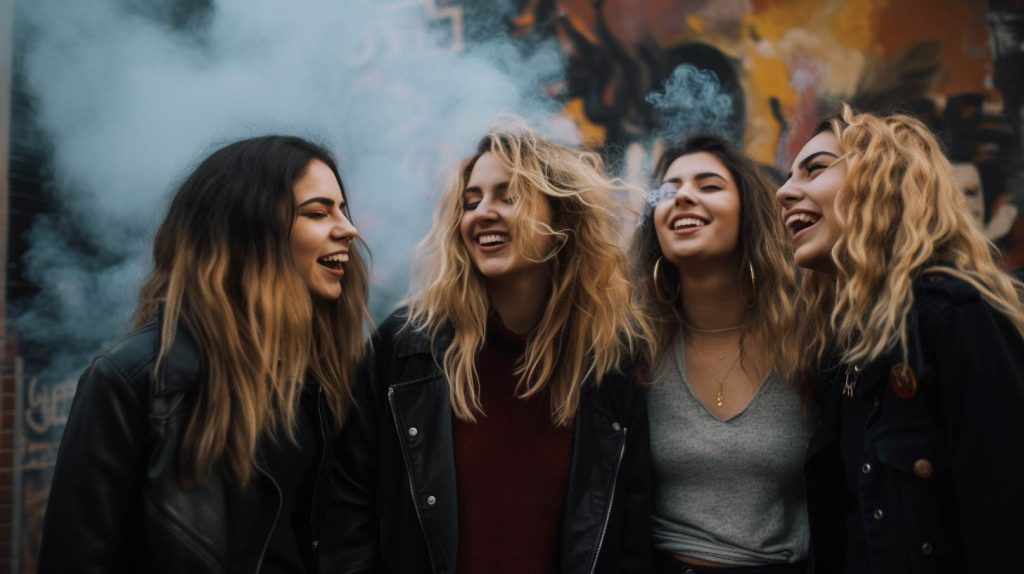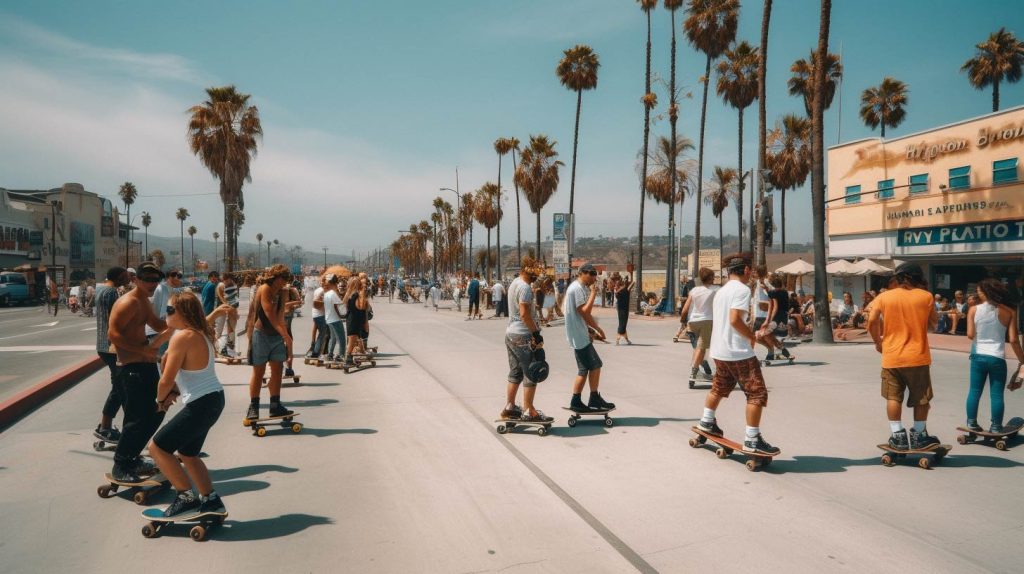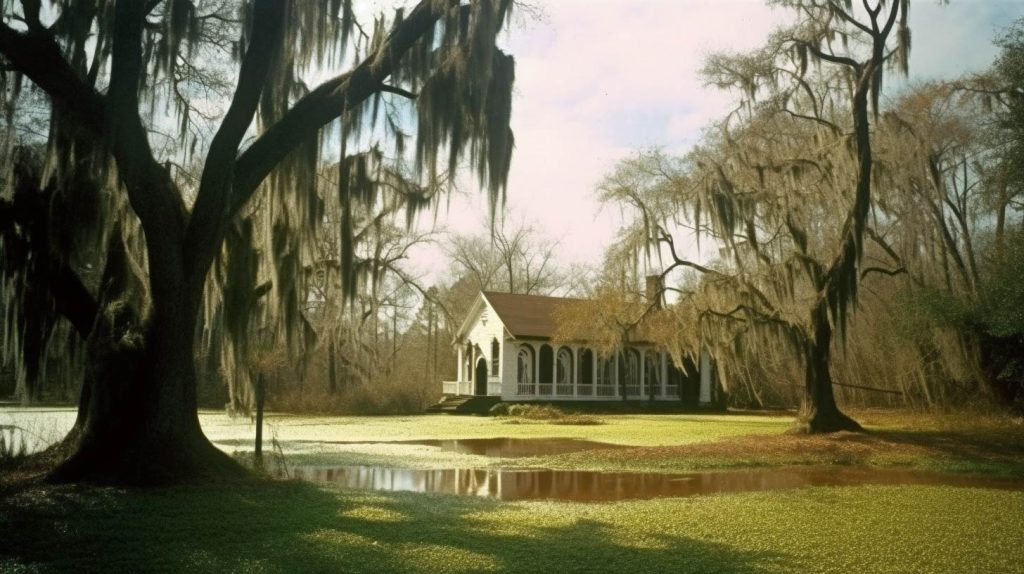Art By Melanie Rizzo
 Reflecting on my experiences as a regular smoker for over a decade brought me back to a myriad of fond memories. Beautiful experiences of toking on mountain tops, rolling up beneath massive forest trees, and blowing smoke in the depths of a grooving crowd of human bodies under beaming lights, moving to the sounds of guitar licks through booming amps. Likewise, I was transported back to the many hair-raising moments as a young jit cutting my teeth on the realities of cannabis illegality, finding safe hiding spots away from any potentially jeopardizing gazes. It’s been a long, wild ride as I’ve taken weed across the country, border to border, and coast to coast, all the while wondering how the hell I got to where I am today, and everywhere I’ve been along the way.
Reflecting on my experiences as a regular smoker for over a decade brought me back to a myriad of fond memories. Beautiful experiences of toking on mountain tops, rolling up beneath massive forest trees, and blowing smoke in the depths of a grooving crowd of human bodies under beaming lights, moving to the sounds of guitar licks through booming amps. Likewise, I was transported back to the many hair-raising moments as a young jit cutting my teeth on the realities of cannabis illegality, finding safe hiding spots away from any potentially jeopardizing gazes. It’s been a long, wild ride as I’ve taken weed across the country, border to border, and coast to coast, all the while wondering how the hell I got to where I am today, and everywhere I’ve been along the way.
Being transplanted to the Sunshine State from my born-and-raised western roots gives me a nearly bi-coastal life experience, and it’s got me thinking about all the states I’ve smoked in, and how each one felt a little different than the next. Sure, humidity can make your joints a bit stickier while desert lands tend to dry them out, but my curiosities stem from the underbelly of the many cultures across the states, and how these foundational nuances influence the cannabis communities within them. It’s safe to say that many of us have grown up alongside weed’s legitimization, and I’m here to take a deeper look into how we all fit in where the West meets the East, and all the cultures in between.
Throughout my lengthy and wavering relationship with weed I’ve had the opportunity to smoke in a total of eleven states. Through the ebbs and flows of cannabis’ presence in my personal life, I’m at a point of reflection on its role in America’s history, the influence it’s had on me coming into my personhood, and the current cultural implications based on its legislation from the West to the East.
WEST
My life began floating around the four corners, from being born where Bugs Bunny should’ve made that left turn, to experiencing firsthand the intricacies of growing up in the religion-heavy culture of Salt Lake City, Utah. I was fortunate to have progressive-enough parents, including a father straight from the Vietnam War/Free Love era who self-medicated his PTSD and addiction for nostalgia with the occasional spliff. It’s with huge thanks to the people of that generation that the push toward legalization has been driven as far as it has. From veterans advocacy groups to legalization activists and plain ‘ole freedom-fighting stoners, the argument that cannabis use is a personal choice that should not be subject to criminalization or government interference was undeniably born on the west coast.
 The response to America’s societal and political upheavals by a counterculture that promoted turning on, tuning in, and dropping out is what laid the groundwork for the beginning of the cannabis movement. Cannabis was embraced in the name of expanding beyond the societal cages of toxic cultural norms, the Vietnam War draft, and the War on Drugs (to name a few). Many consumers discovered new and larger ways of thinking that expanded consciousness, spiritual exploration, and a realization of personal autonomy – societal practices that are still seen as rebellious to this day. These pioneers identified the problems within the greater society, and found cannabis to be a tool for rejecting the mainstream values that perpetuated exclusivity, control, and compliance. Fueled by the desire to create a more compassionate and inclusive society, more and more people began to understand cannabis’ usage and potential as a way to challenge the status quo.
The response to America’s societal and political upheavals by a counterculture that promoted turning on, tuning in, and dropping out is what laid the groundwork for the beginning of the cannabis movement. Cannabis was embraced in the name of expanding beyond the societal cages of toxic cultural norms, the Vietnam War draft, and the War on Drugs (to name a few). Many consumers discovered new and larger ways of thinking that expanded consciousness, spiritual exploration, and a realization of personal autonomy – societal practices that are still seen as rebellious to this day. These pioneers identified the problems within the greater society, and found cannabis to be a tool for rejecting the mainstream values that perpetuated exclusivity, control, and compliance. Fueled by the desire to create a more compassionate and inclusive society, more and more people began to understand cannabis’ usage and potential as a way to challenge the status quo.
The wakes left from the cannabis movement of the ‘60s and ‘70s hippie culture are still kissing the shoreline of the entire western region of the country, and can be seen in many facets of everyday life. In terms of legislation, the movement helped to pave the way for the eventual legalization of cannabis with Prop 215, with many western states following suit. This movement continues to influence the cultural conversation around drug policy and consumption. In fact, out of the states I’ve had the pleasure of getting high in west of the Mississippi, all five of them have legalized cannabis to some extent – California, Nevada, Colorado, and Arizona recreationally, and Utah medicinally.
Culturally, I’ve always noticed that while my current home of southwest Florida is stereotypically recognized as being on “island time” due to its climate, the true laid-back lifestyle is ironically out west. Life tends to move a little slower, people aren’t perpetually in a rush, and you can leisurely take your time with just about anything. Following cannabis’ history and themes of exercising autonomy, personal freedom, and creative expression deviating from “the norm” are noticeably palpable as the baseline of most ideals out west. Likewise, with the spreading of legislative allowances, it almost goes without saying that cannabis has become far less stigmatized, giving way to a shift in cultural attitudes.
EAST
My upbringing transitioned quickly once I joined the “child of divorce” club and was brought to the east coast to begin my adolescence, where I was able to gain some true cultural grit. I’ve always said that Utah bloomed me, and Florida grew me. While the Tampa Bay Area is a blue dot amongst a sea of red, conservative cultural ideas tend to trickle into many aspects of life on the east coast, particularly in regard to cannabis. Out of the six eastern states I’ve smoked in, only two have recreationally legalized cannabis – unsurprisingly, New York and Massachusetts, three have legalized it medicinally to some extent, (Florida, Georgia, Pennsylvania), and one still has cannabis fully outlawed (Tennessee).
 Conservative legislators tend to lean towards more rigid restrictions on cannabis largely at the hands of their constituents, who abide by their beliefs of the usage of the plant as morally wrong. Culturally, this population upholds the assumed taboos of cannabis and all the societal changes it brings along, subsequently leading to an overall attitude of singling-out consumers in terms of extremes. Meaning, if you indulge in the herb, you may find yourself sorted into certain profiled categories. I’m sure this might sound familiar: If you’re a smoker who happens to have tattoos, you’re considered to be either a hippie or a thug. If you’re a smoker carrying a legal medical card, you must be actively battling a terminal or mental illness – you get the picture. While these examples of stigmatization are not representative of the entire East region’s ideals, they are enough of a contributing factor that arguments are still being made against legalization, all of which completely disregard scientific research by raising concerns about public safety, addiction, and health risks.
Conservative legislators tend to lean towards more rigid restrictions on cannabis largely at the hands of their constituents, who abide by their beliefs of the usage of the plant as morally wrong. Culturally, this population upholds the assumed taboos of cannabis and all the societal changes it brings along, subsequently leading to an overall attitude of singling-out consumers in terms of extremes. Meaning, if you indulge in the herb, you may find yourself sorted into certain profiled categories. I’m sure this might sound familiar: If you’re a smoker who happens to have tattoos, you’re considered to be either a hippie or a thug. If you’re a smoker carrying a legal medical card, you must be actively battling a terminal or mental illness – you get the picture. While these examples of stigmatization are not representative of the entire East region’s ideals, they are enough of a contributing factor that arguments are still being made against legalization, all of which completely disregard scientific research by raising concerns about public safety, addiction, and health risks.
All that being said, it’s an exciting time to get involved in the cannabis industry in the eastern US states, as it gives innovators the room to mold the role of cannabis within the culture’s future. Finding yourself in a dispensary chatting about new strains and “water pipes” revives the once-felt adrenaline of not getting caught by the man. The booming motivation is not only fueled by the thrill of bringing in the new future of cannabis, but also by putting people first in light of objective economic, medical, and societal benefits, all while staying true to the east coast attitude of fast-paced, to-the-point, structured living.
The recognition of marijuana’s medical benefits, particularly among the huge senior population of many southeastern states, has played a huge part in changing the culture surrounding cannabis use. Providing our aging population with access to medical marijuana programs gives patients the option to pursue safer alternative treatment plans. Likewise, the states that have legalized marijuana [in some capacity] have seen new economic growth, from tax revenues contributing to state budgets that help fund education, infrastructure, and public health initiatives, to creating new jobs in various sectors such as cultivation, distribution, and retail.
These positive outcomes can only lead to a wider acceptance of cannabis within the culture overall, and the aforementioned stigmas are steadily declining in front of our eyes. More and more, we can foster an environment where people are more comfortable discussing and using cannabis openly, leading to increased dialogue and education around responsible use.
For me, standing in the sun at my favorite waterfront festival and smiling at the smell of that all-too-familiar burning herb is enough to want to continue driving the change, and working towards pushing east coast cannabis culture forward.
Stay tuned as we continue to explore the elements of intersectionality between the coasts and get further into the distinct implications of cannabis legislation, cultural attitudes, stigmas, and communities nationwide.




